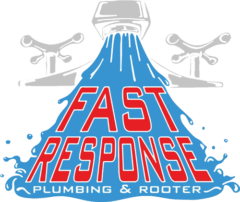Understanding Pipe Freeze Risk
We must recognize the dangers cold weather poses to our pipes. Freezing temperatures can cause serious problems, and knowing the risks helps us prevent damage.
Factors Contributing to Frozen Pipes
Cold weather conditions play a significant role in pipes freezing. Freezing temperatures can cause water inside pipes to freeze and expand. This pressure can lead to pipes bursting.
Another factor is poor insulation. Pipes in unheated areas like basements, attics, or garages are most vulnerable. These spaces often have less protection from cold air.
Finally, when temperatures drop rapidly, we might not have time to prepare. This can leave our pipes less protected against freezing.
Identifying Signs of Frozen Pipes
Reduced water flow is a key indicator. If we turn on a faucet and the water barely trickles, frozen pipes might be the problem.
We should also look for frost on visible pipes. This is a clear sign that freezing temperatures have affected them.
If pipes feel extremely cold to the touch, it could mean there’s an issue. Listening for strange sounds, like gurgling or bubbling, can also be important in detecting frozen pipes.
Preventative Measures for Pipe Safety
Preventing pipes from freezing is crucial as temperatures drop. We’ll focus on insulating pipes and water tanks, using heat tape strategically, and keeping a consistent heat level.
Insulating Pipes and Water Tanks
Insulating pipes is a key step in our efforts to prevent freezing. By using foam pipe insulation, we can trap heat inside the pipes, reducing the chance of ice forming. It’s important to cover all exposed areas, especially those in basements, attics, or outside walls.
For water tanks, insulation blankets are effective. These blankets keep the water temperature stable. We have to secure these properly to ensure they don’t slip or sag. By focusing on both pipes and tanks, we ensure a complete protection system against the cold.
Strategic Use of Heat Tape
Heat tape is another tool that aids us in pipe safety. It is an electrical wire that heats up when plugged in, preventing freezing by keeping the pipes warm. Wrapping heat tape around pipes is easy, but we must carefully follow installation instructions.
We should select heat tape with an automatic thermostat. This helps maintain the perfect temperature without wasting electricity. By strategically using heat tape, we focus on high-risk areas, ensuring efficient heat distribution.
Maintaining Consistent Heating
Maintaining warmth in our homes ensures that pipes don’t freeze. Setting the thermostat to a consistent temperature, even when we’re away, helps prevent a drop that may cause freezing. Opening cabinet doors allows warm air to flow around pipes under sinks and appliances.
Sealing gaps and cracks in windows and doors also helps maintain heat. This not only protects our pipes but also makes our homes more energy-efficient. By reliably maintaining heat, we reduce the risk of pipe damage in cold weather.
Immediate Actions to Thaw Frozen Pipes

When pipes freeze, it can cause significant problems. Acting fast can help avoid bigger issues. We’ll cover how to use heat to safely thaw pipes and manage minor leaks that may occur during the process.
Applying Heat to Thaw Pipes
To thaw frozen pipes, apply heat at the first sign of freezing. We can use a hair dryer or a portable space heater for this task. Start heating near the faucet and move gradually towards the frozen section. Never use an open flame, as it poses a fire risk.
Using a heat lamp or a heating pad wrapped around the pipe can also help. Rotate the heat pad around different sections to ensure even warming. Remember to keep the faucet open; as the ice melts, water will begin to flow, helping the thawing process. Always monitor the pipes closely to avoid overheating.
Handling Minor Leaks
If leaks appear while thawing the pipes, quick action is key. Place a bucket or towel underneath to catch water and prevent further damage. Sometimes, joints may loosen as they thaw, leading to small leaks. It’s useful to inspect the pipe and tighten any loose connections with a wrench.
For small cracks, apply pipe tape to prevent water from spraying out. Pipe repair clamps can offer a more durable fix. These are available at hardware stores and are easy to use. It’s important to plan for pipe replacement soon, but these measures can hold leaks temporarily.
Managing the Aftermath of a Burst Pipe
When a pipe bursts, it’s important to act quickly to minimize damage and costs. We need to assess the damage and handle insurance claims effectively.
Assessment and Repair of Damage
First, we need to stop the water flow by turning off the main valve. This prevents more water from causing damage to our home. Once the water is stopped, we should inspect the affected area. Look for signs of water damage like soaked carpets, warped wood, or peeling paint.
Hiring a professional to assess the damage can be helpful. They can tell us the extent of the repairs needed. It’s crucial to dry out the area quickly to avoid mold. We can use fans, dehumidifiers, or even open windows for ventilation.
We should document the damage with photos or videos. This step is important for our insurance claim. Always keep receipts of repair costs and any services hired.
Navigating Insurance Claims
Understanding our home insurance policy is the key to navigating claims. We need to ensure the damage is covered under our plan. Contacting our insurance provider as soon as possible gets the process started quickly. They might send an adjuster to assess the damage.
Having thorough documentation is crucial. It helps us communicate what happened clearly. Sometimes, we might need estimates from repair professionals to submit with our claim.
Knowing what is covered by insurance prevents unexpected costs. Reviewing our policy regularly and updating it if necessary makes handling future incidents smoother.
